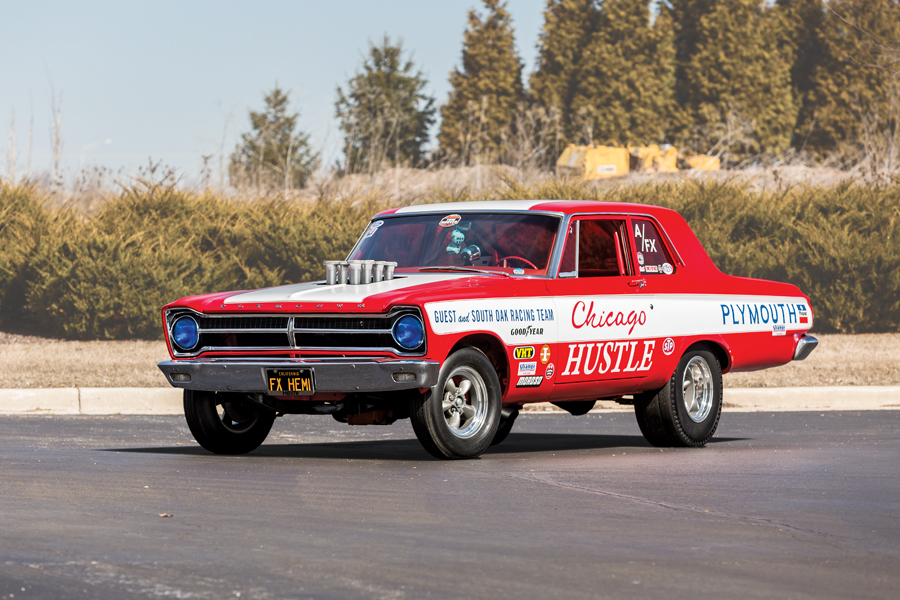- Custom California car built by Mopar restorer Bob Munoa
- From the Denny Guest Collection
- Custom Hemi altered-wheelbase car
- 426 Hemi engine built to 528 ci
- Hilborn fuel injection
- MSD ignition system
- Push-button 3-speed automatic transmission
- A990 lightweight custom bucket seats
- Full roll cage
- Trunk-mounted battery
- Custom graphic design
- Tinted windows
- Solid body
No chassis number available

